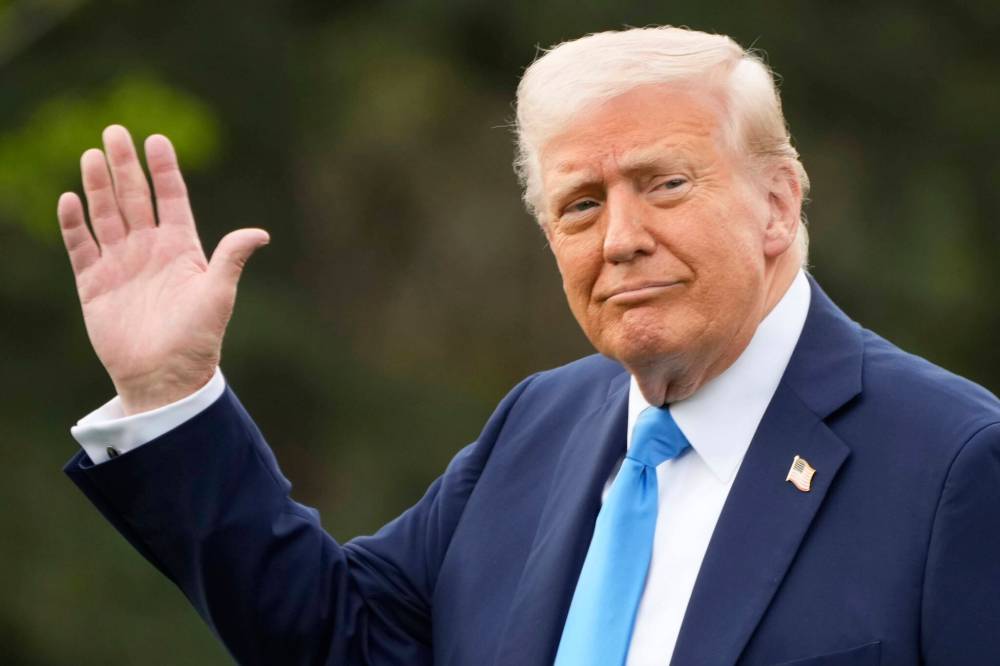The art of the painfully slow deal
Advertisement
Read this article for free:
or
Already have an account? Log in here »
To continue reading, please subscribe:
Monthly Digital Subscription
$0 for the first 4 weeks*
- Enjoy unlimited reading on winnipegfreepress.com
- Read the E-Edition, our digital replica newspaper
- Access News Break, our award-winning app
- Play interactive puzzles
*No charge for 4 weeks then price increases to the regular rate of $19.95 plus GST every four weeks. Offer available to new and qualified returning subscribers only. Cancel any time.
Monthly Digital Subscription
$4.99/week*
- Enjoy unlimited reading on winnipegfreepress.com
- Read the E-Edition, our digital replica newspaper
- Access News Break, our award-winning app
- Play interactive puzzles
*Billed as $19.95 plus GST every four weeks. Cancel any time.
To continue reading, please subscribe:
Add Free Press access to your Brandon Sun subscription for only an additional
$1 for the first 4 weeks*
*Your next subscription payment will increase by $1.00 and you will be charged $16.99 plus GST for four weeks. After four weeks, your payment will increase to $23.99 plus GST every four weeks.
Read unlimited articles for free today:
or
Already have an account? Log in here »
Hey there, time traveller!
This article was published 11/04/2025 (271 days ago), so information in it may no longer be current.
How do you make a deal with a country — and a president — that seems to believe signed contracts are a worthless annoyance?
Who expects to be able to undertake cogent negotiations with a nearby neighbour when the official social media account for the White House (@whitehouse) tweets out — in all caps — “DO NOT RETALIATE AND YOU WILL BE REWARDED.”?
Those are questions that Canada’s next prime minister is going to have to find an answer for, and quickly, as we deal with American tariffs despite having a signed trade agreement with that country.

Mark Schiefelbein / The Associated Press files
U.S. President Donald Trump
How do you make that deal? Exceedingly thoroughly and remarkably slowly.
The U.S. is a major trading partner and, as a result, the Canadian government will have to at least go through the motions of negotiations over an upcoming review of the Canada-United States-Mexico Agreement, even if the signatures on a final version of the agreement will be worthless before the ink dries. As recent tariff attacks have shown, U.S. President Donald Trump simply cannot be trusted to honour his signed commitments.
But the details of how CUSMA actually works is a fascinating one — especially when it comes to a review of the agreement.
And the magic numbers that have to be considered are six years and 16 years. While trade deals traditionally don’t have end dates — to provide the businesses that depend on them with some sort of guarantee — the CUSMA does.
The U.S. argued in 2020 that it needed both an end point to the deal and a regular review so that it could ensure its interests weren’t overtaken by being locked into an endless agreement if there were significant changes in trade.
It was a major sticking point, but the Americans eventually gained the needed agreement.
The six and 16 formula was at the heart of the agreement. Every six years, the trade agreement would be reviewed by Canada, Mexico and the U.S., with each nation raising its individual concerns. That review is set for July 2026. As part of that review, the nations would each agree that any new agreement would last for another 16 years.
If any of the nations didn’t agree, the clock would start ticking. In this case, that would mean the existing deal would end in July 2036. If a review was successful, the three nations agreed to the extension, the end-date would move to July 2042.
But if the clock started ticking to end the agreement, there would be a review of the existing terms every year — and if that review was successful in any year, the end-date would again be reset to 16 years after that agreement was signed.
So, let’s negotiate. We should argue that the current tariffs imposed by Trump be suspended during the negotiations as a good-faith measure between trading partners, coordinate with Mexico, and get down to negotiations.
A kabuki theatre of negotiations. A rope-a-dope performance of carefully back-and-forth deliberations worthy of Muhammad Ali. A thorough analysis of American concerns, with every clause and scrap of punctuation brought back to Ottawa for review.
And if it doesn’t work out in 2026 to our satisfaction — or starting earlier, if Trump wants to get to the table more quickly, which he has said he wants to do — then there’s always next year. And the year after. And the year after. Because 2036 is a few U.S. administrations away.
Now, nothing in that process would prevent the U.S. from just up and leaving CUSMA — or USMCA, as they like to call it — with six months’ written notice, something that would upend supply chains across North America and cause complete chaos.
But sometimes doing nothing — spectacular, performative, frustrating nothing — might be the best route of all.






